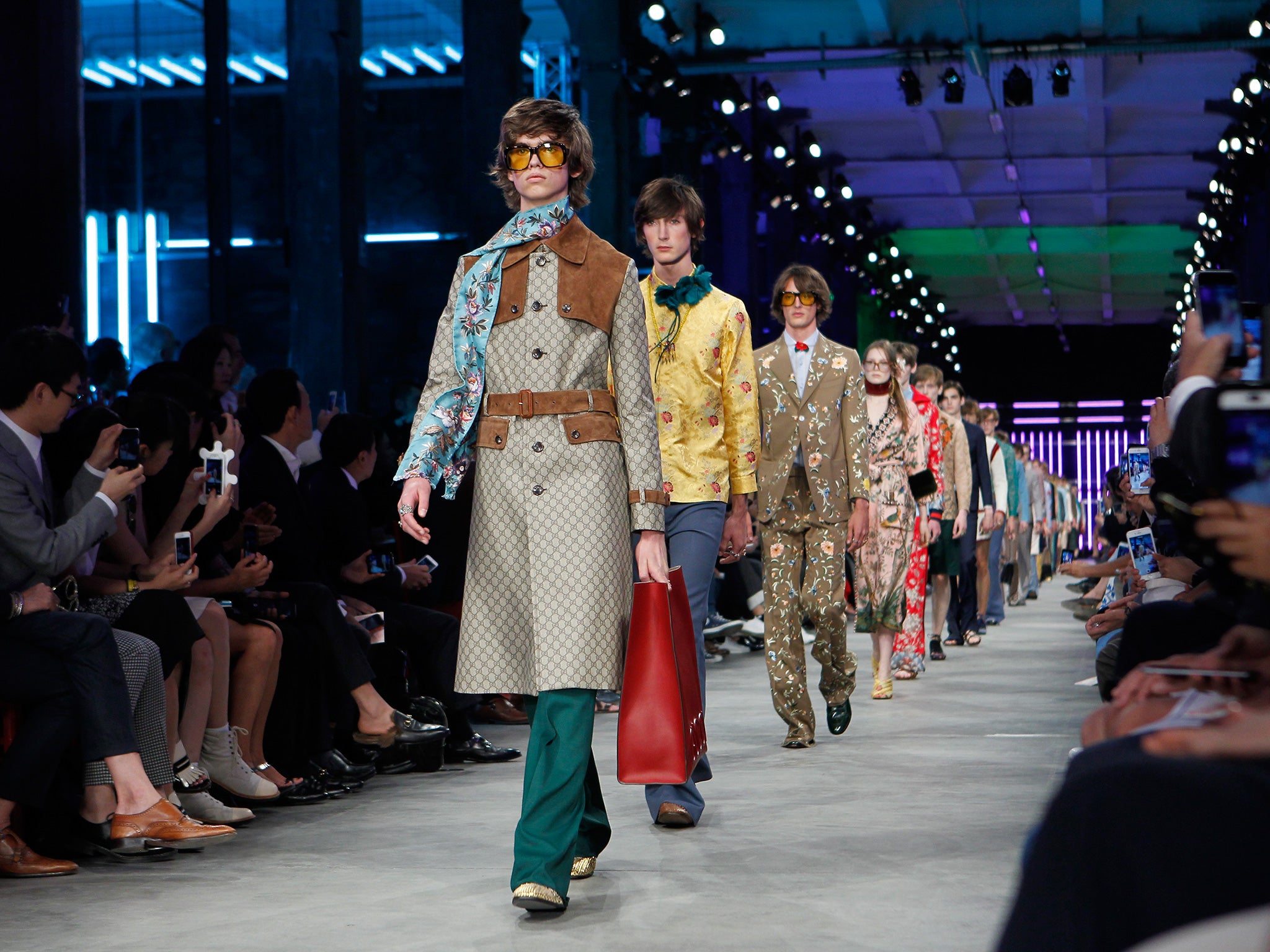Spring/summer 2016 menswear shows: Designers inspired by teenage rebellion
London, Milan and Paris all featured a shake up of the old guard

Youth, Oscar Wilde said, is wasted on the young. Maybe that’s why it’s such a valuable commodity. We’re often told that time is a luxury – something that fashion designers have started to opine, too. Clothing that takes weeks, rather than hours, to construct winds up costing the earth because of the luxury of someone else’s time.
Today, fashion trades heavily in and on the high extravagance of rare goods such as albino crocodile skin and Kobe leather – yes, as in the most expensive meat in the world, some £200 per kilo: the leather was lusciously used at Louis Vuitton. It may be pricey, but at least you can buy it. Youth is the one thing you can’t buy, no matter how rich you are.
Well, up to a point of course. That’s why the plastic surgery industry, worth £750m in the UK in 2005, is forecast to reach £3.6bn this year. But this obsession with the fountain of youth means that come next season, fashion is kitting you out for a trip back in time.
Youth was the overriding message at the spring/summer 2016 shows – not just the extreme youth of the bodies that the clothes were wrapping (one agency, apparently, won’t employ models who are over 19), but embedded in the garments themselves. London’s menswear week is the youngest – designers are barely out of college and their steps into the industry are still tentative, even faltering. The established week itself is barely three years old, and the youthful enthusiasm of its designers is infectious.
In Pictures: Spring/Summer 2016 menswear collections
Show all 40Christopher Bailey’s Burberry Prorsum show, for instance, belied the fact that the label is about to turn 160. It was 160 going on 16, with its fresh, crisp lace – a few male models looking as if they’d fallen into a baby’s bassinet, and dragged it on to the catwalk. Overall, though, the youth was conveyed not through the first communion guipure and ruffles, but the relentless teenage vigour of a skinny silhouette, gangly even, suctioned close to the body. Burberry called it a “Chelsea” fit, which reminded me of the gawky adolescents who started the Swinging London youth-quake back in the Sixties. Bailey’s move back to London has given Burberry a similar shake up, and while it would be facetious to imply that these luxurious but ultimately ultra-conventional clothes are kickstarting anything, it did prove that you can teach old dogs new tricks.
And what of London’s litter of new designers, the puppies currently yapping about the ankles of London Fashion Week and causing a fuss? In contrast to Burberry, Craig Green is a new dog with an old trick, one he’s refining and defining, moving on slowly. For some, it is too slowly, infinitesimal as the amendments seem to be each season to push his work to aesthetic pastures new. This time, a fresh colour palette of satsuma, lemon and, fittingly, green, provided a youthful energy, but the clothes still had a beguiling maturity. Maybe they weren’t especially new, but they were good.
London still represents the new guard. But the mood was much the same in Milan and Paris. Miuccia Prada’s collection felt overwhelmingly, disarmingly vulnerable. As opposed to the protective business suiting of a grown man, these clothes – pushed and pulled and rucking around the body – looked like they belonged to a dishevelled schoolboy, painfully aware of his own physicality, without a shred of confidence. The genteel pleated skirts and sweaters of the female models – Prada shows a women’s pre-collection in tandem with its menswear – only emphasised the disarray of the men. Their legs were painfully exposed by thigh-high shorts, socks rumpled, chests exposed through an odd mix of ill-fitting tailoring and sportswear that seemed pulled from the PE spare kit box. Yet there was an odd seduction – maybe, if we could relive our teenage years, however intolerable they seemed at the time, we would.
The other youth in Milan came courtesy of Alessandro Michele at Gucci, whose collections consciously referenced the dandyish style of contemporary men. Tattoo patterns were reworked as lush embroideries – garlands of flowers circling a puny chest, roses pinpricking a leather jacket. They were sufficiently divorced from their original context so as to avoid the inherent cliché. The wayward mix of clothes, as at Prada, spoke of youth. I’m not sure how much of a future there will be in lace shorts and Michele’s favourite pussy-bow blouses. But he’s young at the house of Gucci. It’s easy to forgive him his over-enthusiasm to change things.
I don’t know if Rick Owens will forgive the young model who flashed a protest sign at his catwalk show and wound up overshadowing the collection, although his clothes are built on precisely those kind of ideas. Owens has a juvenile bent to his clothes; he’s professed that they’re based on masturbation, sodomy, or – in this case – anal prolapse. It always raises a laugh, like the gobby kids sat at the back of the class, disrupting the rest.
Raf Simons, by contrast, is the quiet type – his clothes reflect and refract youthful unrest and disquiet, but he doesn’t seek to evoke it himself. That’s why his sagging jeans and low-pulled hoods – in the fashion banned by many suburban shopping centres to avoid anti-social behaviour – looked like the garb of juvenile delinquents clustered around the bus stop on a Friday night. How about that for a new vision of luxury for the 21st century? µ
Subscribe to Independent Premium to bookmark this article
Want to bookmark your favourite articles and stories to read or reference later? Start your Independent Premium subscription today.




Join our commenting forum
Join thought-provoking conversations, follow other Independent readers and see their replies
Comments